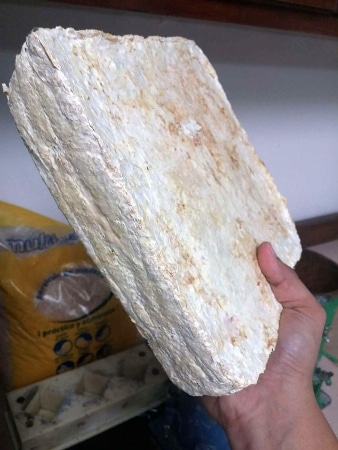Jul 12 2016
Researchers at the Universidad Autónoma de Nuevo León (UANL) have developed an efficient biopolymer that is both sustainable and inexpensive.
 Mycelium (CREDIT: Investigación y Desarrollo)
Mycelium (CREDIT: Investigación y Desarrollo)
Farm wastes, such as sawdust, coconut fiber, and crushed corn stalk, among other things, can be used to create biomaterials that are used as shipment and construction fields. A solid, natural polymer, similar to plastic, can be created using a mixture of the farm wastes and mycelium element. The mycelium element can be made of different materials and is the base of the fungus.
The mechanical properties of a polymer formed by this process depend upon the raw materials that are fed into the mycelium. Using grass and sorghum will make for a strong polymer that can support heavy objects or loads. If sawdust and coconut fiber is used the resulting material does not burn. A polymer made of bermuda grass, sawdust and paperboard pulp would be capable of absorbing atmospheric humidity. A material that suits the production needs can be developed.
What we do is to replicate a process found in nature and synthesize it for the industry.
Mauricio Franco Herrada, Student in the Faculty of Mechanical and Electrical Engineering, UANL
The biomaterials created can be used for a variety of purposes. Making solar panels is one of the most profitable uses of the biomaterials as these panels are in the form of sheets. Floorboards and tables that have the same thermal properties of gypsum boards can also be made using this biomaterial. The material can also be used like Styrofoam, to create molds for temporary articles and electronics. The biomaterial can also be used for the major part, although not completely, for producing relatively complex structures such as bicycles too, said Herrada.
The production of the material requires only organic waste from the farm industry that is not used for any other purpose. The only cost incurred in the production of the material is for the incubation of the fungus. The inexpensive process yields a return of 192%, in addition to being sustainable and eco-friendly.
The materials are presently being produced, in the Faculty of Biology in UANL, on a small scale. The team, however, plans to rent equipment and a bigger place to facilitate large scale production, says Herrada.
Dr. Efrén Robledo Leal who is a researcher in mycology in the Faculty of Biology of UANL and has explored and applied the fungus mycelium extensively has developed the material. He was later joined by Dominik Reyes Nieto, a graduate of Faculty of Biological Sciences, and Mauricio Franco Herrada and Carlos Muñoz Bernal from the Faculty of Mechanical and Electrical Engineering, in order to further the research to explore the industrial applications of biomaterials.